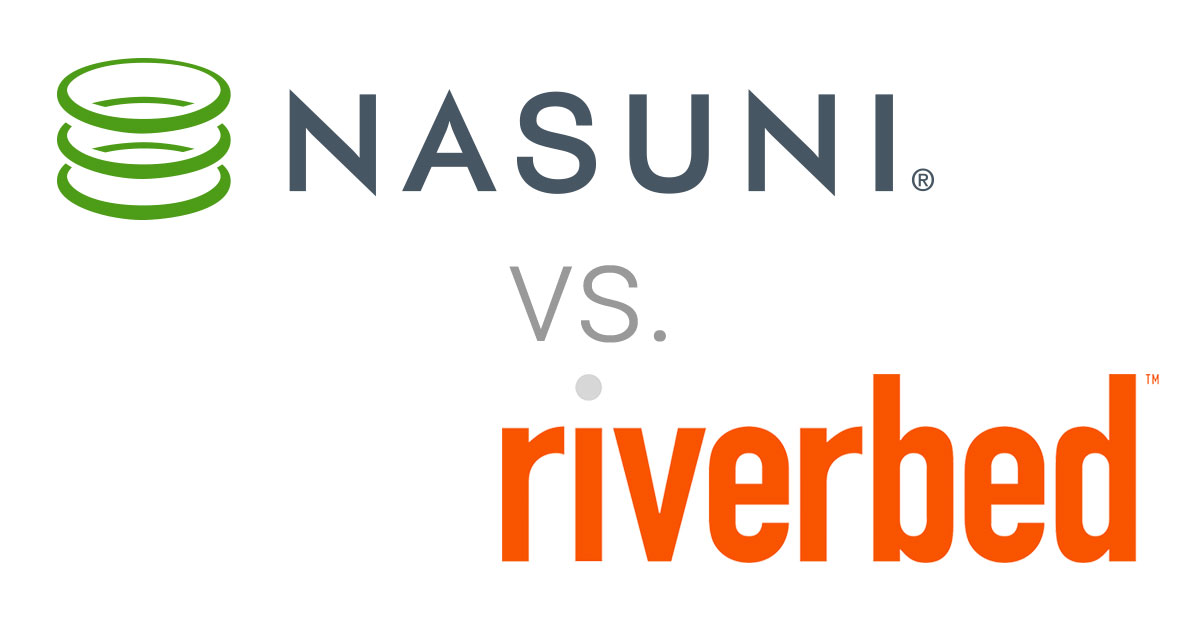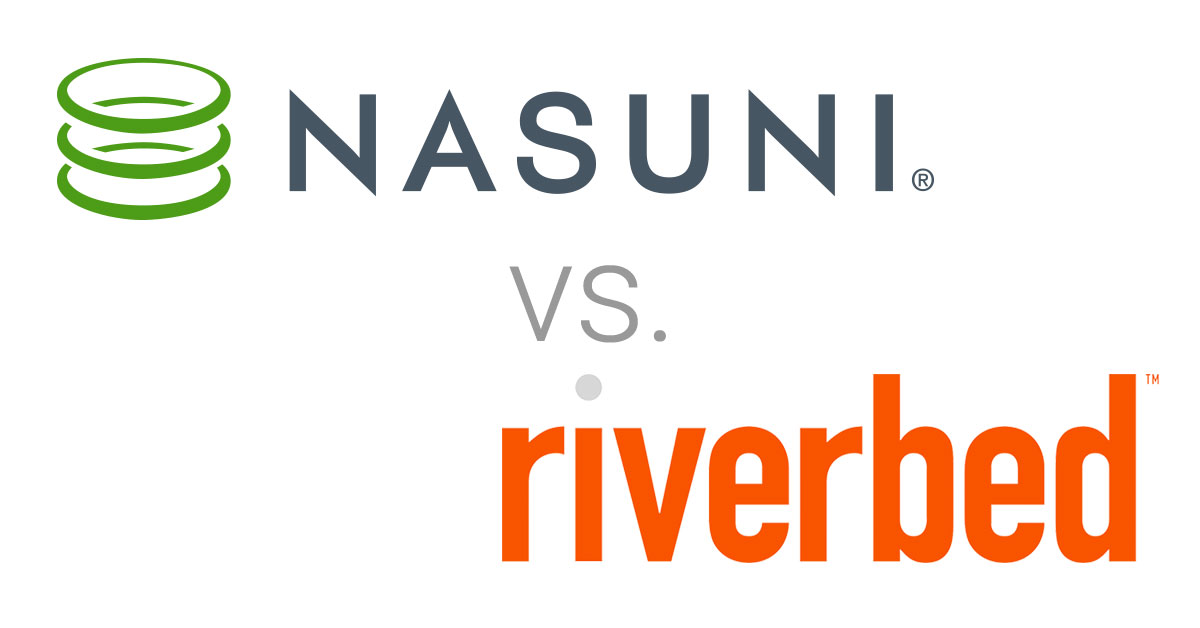Is Nasuni a Riverbed Alternative for Remote File Access?
May 18, 2018 | Andre Benguerel

Is Nasuni a Riverbed competitor? Not really. Our cloud-based file data management platform actually complements Riverbed Steelhead by offloading file synchronization traffic from the WAN to the internet, so Riverbed can focus more on accelerating applications.
As a former Riverbed systems engineer, perhaps I’m more sensitive to it, but with the release of Riverbed SteelFusion, I seem to be hearing this question a bit more. So I thought I’d explain why Nasuni is only a Riverbed alternative if you’re looking to modernize file storage using the cloud, consolidate NAS and remote office file servers, or provide better multi-site file sharing and collaboration.
What is Riverbed
Riverbed is synonymous with WAN optimization. That’s what they’re great at. So when enterprises need to share files across many offices, they typically bought Network Attached Storage (NAS) for the data center, then used Riverbed Steelhead to accelerate their MPLS-based private WAN to give users in branch offices remote access to the NAS. Or, they used Riverbed to speed up the replication of the files from the NAS in the data center to NAS or file servers in the remote offices so users could access the files at local LAN speed.
With the number and size of files growing faster than ever, this approach no longer scales. Using a private WAN to bring users to files or move files to the edge is just too expensive and too slow, no matter how much you accelerate it.
What is Nasuni
That’s where Nasuni comes in. Nasuni is an enterprise file services platform that enables you to store, synchronize, protect, and manage files across all locations at scale. It is powered by a global file system that is based in unlimited cloud object storage. Instead of NAS or file servers, you use Nasuni with public cloud object storage from Azure or Amazon to eliminate your datacenter storage footprint entirely, or you use private cloud object storage from IBM, Dell EMC, or Hitachi that goes in your datacenter but is completely managed by the vendors.
Nasuni stores all files in the object storage of your choice, then caches just the active files in all locations using virtual or physical edge appliances, which present the files via standard CIFS or NFS protocols, and integrate with local AD or LDAP directories for secure access. The trick is the edge appliances only have to be big enough to store the active files, which are usually about 20% of total file data, so you’re reducing your on-prem file storage footprint – and costs – by about 80%.
All file changes are compressed, de-duped, and encrypted with AES using customer-controlled keys, then automatically sync’ed at high speed across all edge appliances using public internet bandwidth, not the WAN (this is where Nasuni and the cloud can be viewed as a Riverbed alternative).
Files are continuously versioned by Nasuni as they change, eliminating the need for file backup. This continuous file versioning combined with geo-replicated object storage ensures you can recover any site from a disaster in <15 minutes.
Does SteelFusion Make Nasuni More of a Riverbed Competitor?
The short answer is no. SteelFusion is a newer product from Riverbed that integrates storage, server, network and virtualization to run data center apps locally. Think of it as a hyperconverged platform that starts with WAN optimization, Riverbed’s core strength. On top of that Riverbed adds memory and CPUs to run VMs, and disk for storage.
There is no sharing or real-time collaboration with the storage – the data center-to-branch office mapping is 1:1. The SteelFusion Core component is what does all the magic, but you still need a SAN or NAS behind it. It just takes the LUNs, Shares or Mounts and exports them to the remote office, and then manages all the silos of storage you’ve created in all your remote offices.
The Bottom Line: Nasuni and the Cloud are Only a Riverbed Alternative for NAS Consolidation and Global File Collaboration
If you’re looking for WAN acceleration and/or remote office hyperconvergence to accelerate your apps, Riverbed is a great choice.
If you’re looking to consolidate NAS or file servers, or offer faster, more scalable multi-site file sharing, Nasuni and cloud storage are the better alternative for these reasons:
- Riverbed requires continued investments in data center SAN/NAS and remote office file servers. Nasuni is a global file system that consolidates all files in modern cloud object storage, and uses thin edge appliances to provide local, high performance file access.
- Riverbed requires more costly investments in WAN, MPLS, and its own WAN acceleration products. Nasuni moves file synchronization and transfer off the WAN to low-cost public internet.
- Riverbed requires file backup in the datacenter and potentially at the edge; Nasuni eliminates file backup completely with its continuously versioning file system.
- Riverbed requires a separate infrastructure for file disaster recovery. Nasuni and cloud object storage geo-replication provide built-in DR without needing dedicated DR sites.
- Riverbed does not offer a solution for keeping all remote offices in sync with the latest file changes and collaborating on the same files without version conflict. Nasuni offers a Global Volume Manager that manages changes from all sites that are using the same shared volume, and offers Global File Lock to prevent version conflict.
What do you think? Do you see Nasuni and cloud storage as a NAS, backup, and Riverbed alternative? Comment and let me know.
[rev_slider alias=”eguide-object-vs-file-storage”]
Bobby Silva shares Nasuni’s efforts to aid evolving global data sovereignty requirements and compliance regulations in addition to being recognized as a Google Cloud Assured Workloads partner.
Lance Shaw shares insight on how switching to hybrid cloud solutions can be positive for both the enterprise and the planet.
Andres Rodriguez shares why enterprises need to get fit for AI and the top factors prohibiting their AI success.


